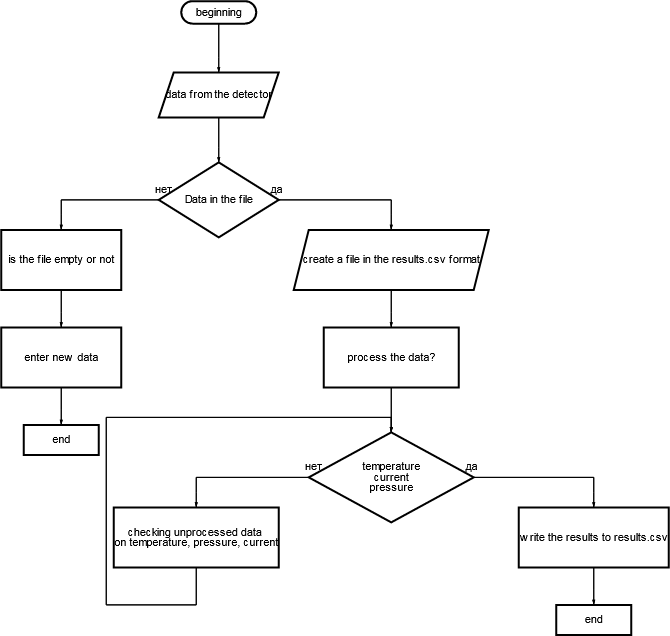Файл: Исследование суточных вариаций поровой активности радона в поверхностных грунтах удк 550. 42 546. 296 551. 51.docx
ВУЗ: Не указан
Категория: Не указан
Дисциплина: Не указана
Добавлен: 30.10.2023
Просмотров: 282
Скачиваний: 2
ВНИМАНИЕ! Если данный файл нарушает Ваши авторские права, то обязательно сообщите нам.
СОДЕРЖАНИЕ
PLANNED RESULTS OF THE DEVELOPMENT OF THE PLO/OPOP
Areas applications quantities density flow radon
Climatology. Radon - as a tracer of air exchangeprocesses
Static and dynamic methods measurements
Dynamics of radon activity and its decay products inside the storage chamber
Chapter 4 Financial management, resource efficiency and resource saving
Scientific and technical research budget
/ Lei Zhang, Qiuju Guo, Ke Sun // 2015.
-
Soil heat flux and air temperature as factors of radon (Rn-222) concentration in the near-ground air layer / Agnieszka Podstawczyńska, Włodzimierz Pawlak // 2016. -
Radon concentration in soil gas: a comparison of the variability resulting from different methods, spatial heterogeneity and seasonal fluctuations / Winkler R., Ruckerbauer F., Bunzl K. // 2001. -
Geological and geochemical factors affecting radon concentrations in dwellings located on permeable glacial sediments / Sundal, A. V., Henriksen H., Lauritzen S. E., Soldal O., Strand T., Valen V. // 2004. -
Diurnal radon variations in the upper soil layers and at the soil-air interface related to meteorological parameters / M. Schubert, H. Shultz. // 2002. -
The development of radiation monitoring technology for urban // Bulletin KRAESC Physical and Mathemtical Sciences / Yakovleva
V. S., Nagorskiy P. M. /// 2015.
-
Method of monitoring of undisturbed radon flux density from soil surface / V.S. Yakovleva, P.M. Nagorskiy, G.A. Yakovlev // 2016. -
Моделирование влияния атмосферы и состояния литосферы на динамику плотности потока радона и торона от поверхности почвы // Моделирование влияния атмосферы и состояния литосферы на динамику плотности потока радона и торона / Яковлева В.С. // Бюллетень ТПУ, 2010. -
Особенности калибровки детекторов ионизирующих излучений, используемых для мониторинга почвенного радона
/ В.С. Яковлева, П.М. Нагорский // Вестник КРАУНЦ. Физ.- мат. Науки. 2015. № 1(10). C. 54-64. ISSN 2079-6641.
-
Dynamics of soil gas radon concentration in a highly permeable soil based on a long-term high temporal resolution observation series / Szabó, K. Z., Jordan, G., Horváth, Á., Szabó, C. // Journal of environmental radioactivity, 2013. -
Seasonal variation on radon emission from soil and water / Yogesh Prasad, Ganesh Prasad, G. S. Gusain, V. M. Choubey, R. C. Ramola
// 2009.
-
Об основах охраны труда в Российской Федерации: Федеральный закон от 17.07.99 № 181 // Справочная правовая система Консультант плюс. -
ГОСТ 12.0.003-74. Опасные и вредные производственные факторы. Классификация // Справочная правовая система Консультант плюс. -
СанПиН 2.2.4.548-96 Гигиенические требования к микроклимату производственных помещений. -
СН 2.2.4/2.1.8.562 – 96 Шум на рабочих местах, в помещениях жилых, общественных зданий и на территории застройки. -
СанПиН 2.2.2/2.4.1340-03. Гигиенические требования к персональным электронно –вычислительным машинам и организации работы // Справочная система Консультант плюс -
ГОСТ 12.1.038-82 ССБТ. Система стандартов безопасности труда. Электробезопасность. Предельно допустимые значения напряжений прикосновения и токов // Справочная правовая система Консультант плюс. -
СНиП 23-05-95. Естественное и искуственное освещение. Строительные нормы и правила Российской Федерации. М.: Изд-во стандартов, 1995.-30 с. -
M. Wilkening / Radon in the Environment // 1990. -
Трудовой кодекс Российской Федерации от 30.12.2001 № 197-ФЗ (ред. от 27.12.2018). -
ГОСТ Р 50923-96. Дисплеи. Рабочее место оператора [Текст]. – Введ. 1996-07- 10. – М.: Стандартинформ, 2008 – С.4. -
ГОСТ 12.2.032-78. ССБТ. Рабочее место при выполнении работ сидя [Текст]. – Введ. 1978-04- 26. – М.: Издательство стандартов, 1978 – С.5. -
СанПиН 1.2.3685-21. Санитарно-эпидемиологические правила и нормативы «Гигиенические нормативы и требования к обеспечению безопасности и (или) безвредности для человека факторов среды обитания» [Текст]. – введ. 2021-01-28. -
СанПиН 2.2.4.548-96 Физические факторы производственной среды. Гигиенические требования к микроклимату производственных помещений. Санитарные правила и нормы. – M.: Стандартинформ, 2002. -
СанПиН 2.2.2/2.4.1340-03. Санитарно-эпидемиологические правила и нормативы «Гигиенические требования к ПЭВМ и организации работы» [Текст]. – Взамен СанПиН 2.2.2.542-96; введ. 2003-06-30. – М: Российская газета, 2003. – 3 с -
Об основах охраны труда в Российской Федерации: Федеральный закон от 17 июля 1999 №181 – ФЗ // Российская газ. – 1999. – 24.07.
– С. 4
-
СанПиН 2.2.1/2.1.1.1278–03. Гигиенические требования к естественному, искусственному и совмещённому освещению жилых и общественных зданий -
ГОСТ 12.1.038-82. ССБТ. Электробезопасность [Текст]. – Введ. 1983-01-07. – М.: Издательство стандартов, 1988. – 2 с. -
СанПиН 2.6.1.2523-09 Нормы радиационной безопасности (НРБ- 99/2009). − М.: Минздрав России, 2009. -
Кукин П.П. Безопасность технологических процессов и производств: учеб. Пособие / П.П. Кукин, В.Л. Лапин – М., Высшая школа, 1999 – С.318.; -
СНиП 21-01-97. Пожарная безопасность зданий и сооружений [Текст]. – Взамен СНиП 2.01.02-85; введ. 1998-01-01. – М.: Госстрой России, ГУП ЦПП, 1999. – 6 с. -
Пожаро - взрывобезопасность промышленных объектов. ГОСТ Р12.1.004-85 ССБТ Пожарная безопасность. -
Воздуходувка SB-0310 [Электронный ресурс] – Режим доступа: https://zenova.ru/category/vozduhoduvki/model/sb-0310-d0, свободный – Загл. с экрана. – Язык русский. Дата обращения
10.05.23 г.
-
СанПиН 2.2.4.3359-16 "Санитарно-эпидемиологические требования к физическим факторам на рабочих местах" – введ. 2016-06-21. − М.: Минздрав России, 2016. -
https://www.vseinstrumenti.ru/product/ventilyator-event-volna-150s- 1638959.
application 1

Томск – 2023г.